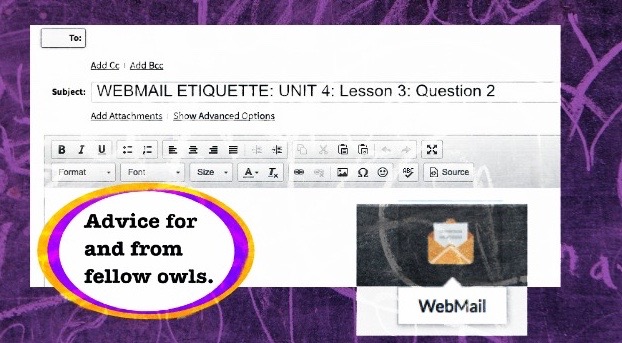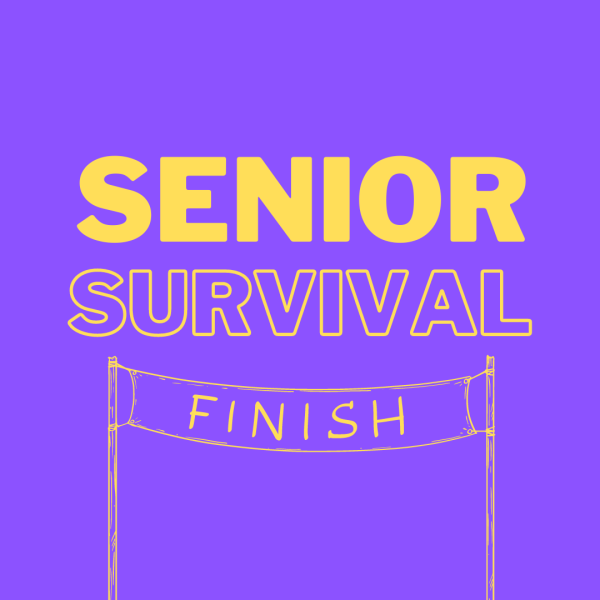WEBMAIL ETIQUETTE
Blame it on the clumsy fingers or overly active schedules, but, we’ve all probably sent out a grimace-inducing webmail. Imagine hanging this webmail underneath a fridge magnet, on display for the whole family to see. Here, Mom and Dad, these are my manners, which have gone to waste, much like last week’s rotten lasagna.
Sending respectful webmails not only reflects well on your parents, it makes teachers more receptive to questions, cries for help, and suggestions. Plus, conducting yourself with manners applies well beyond school life. There will come a time to email a boss at work, and you certainly do not want to come across in a negative light.
First things first I like to tackle the subject line, which you can handle similarly to the title of an essay. I asked Mr. Burch, a teacher here at iUniversity Prep, for advice on constructing a stellar webmail. He advises you to, “be clear in the subject line so that the reader has a general idea of what the webmail is about before even opening it.” A webmail, because the majority of webmails are questions over assignments, should include specifics right down to the title of the lesson, question number, unit number, and lesson number. Here is an example that Mr. Burch supplied: “I’m struggling in science on unit three, lesson four about photosynthesis and how to complete the portfolio assignment about it. My subject line could read, “Science U3L4 Portfolio Question”.
In the body of your webmail, to make a good impression on the person to which you are communicating, it helps to directly address them. You can simply include a greeting like, “Hello, [Name Here]” or “Greetings, [Name Here]. Then, following the greeting, you can add a caring statement. This statement humanizes the webmail. Here is another example that Mr. Burch provided: “I hope you’re having a great day,” “Thanks for your help last week in tutorials,” “I wanted to thank you for your LL last week because it really cleared up some things for me.” Obviously, you’d say whatever is appropriate for your situation. Whenever anyone (students, parents, teachers, or anyone) reads a webmail or email it’s nice to feel like the person writing you actually cares about you, even if it’s something as simple as, “Thanks for …” and then continuing on with the real reason for the message”.
If you state a problem without offering any foundation to reach a solution, your teacher may have to send an additional webmail, asking for more clarity. This process takes more time and causes frustration between both the student and the teacher. So, compile your confusions into a question or several questions, if needed. If you can not come up with a question, then ask for tutorials or for a phone call. Your teachers are only trying to help, so allow them the opportunity to do so. Because, as Mr. Burch says, “It’s very difficult to get answers to questions that are never asked”.
Proper grammar and punctuation rules apply to webmails, but this shouldn’t be handled as much of a task. Really, when speaking to anyone with a professional tone, you should use proper grammar rules.
Additionally, you can implement many of these same guidelines when text messaging your teachers. Here’s what Mr. Burch has to say about text messaging: “Texts are meant to be short and to the point. You don’t need to address the person and use a comma afterward or use proper grammar and punctuation. However, simply vomiting a problem and hitting send isn’t appropriate either. Here’s a comparison text:
(Not Good): I can’t do today’s lesson [now the teacher has to ask you what you need and that just takes more time]
(Okay): I’m having trouble with today’s lesson in science, can you help? [the teacher still needs to ask you HOW they can help]
(Good): Hi Mr. XYZ, I can’t figure out the U3L4 portfolio for science. Can you call me when you’re available to help me? [the teacher knows your problem, knows what you’ve asked for as a possible solution and can work to help you ASAP]”.
To close a webmail you can add a short, “thank you”, to maintain your communication skills throughout its entirety.
Overall, webmail etiquette merely requires consideration towards others. As long as you show respect, you will receive the help you desire in return.







